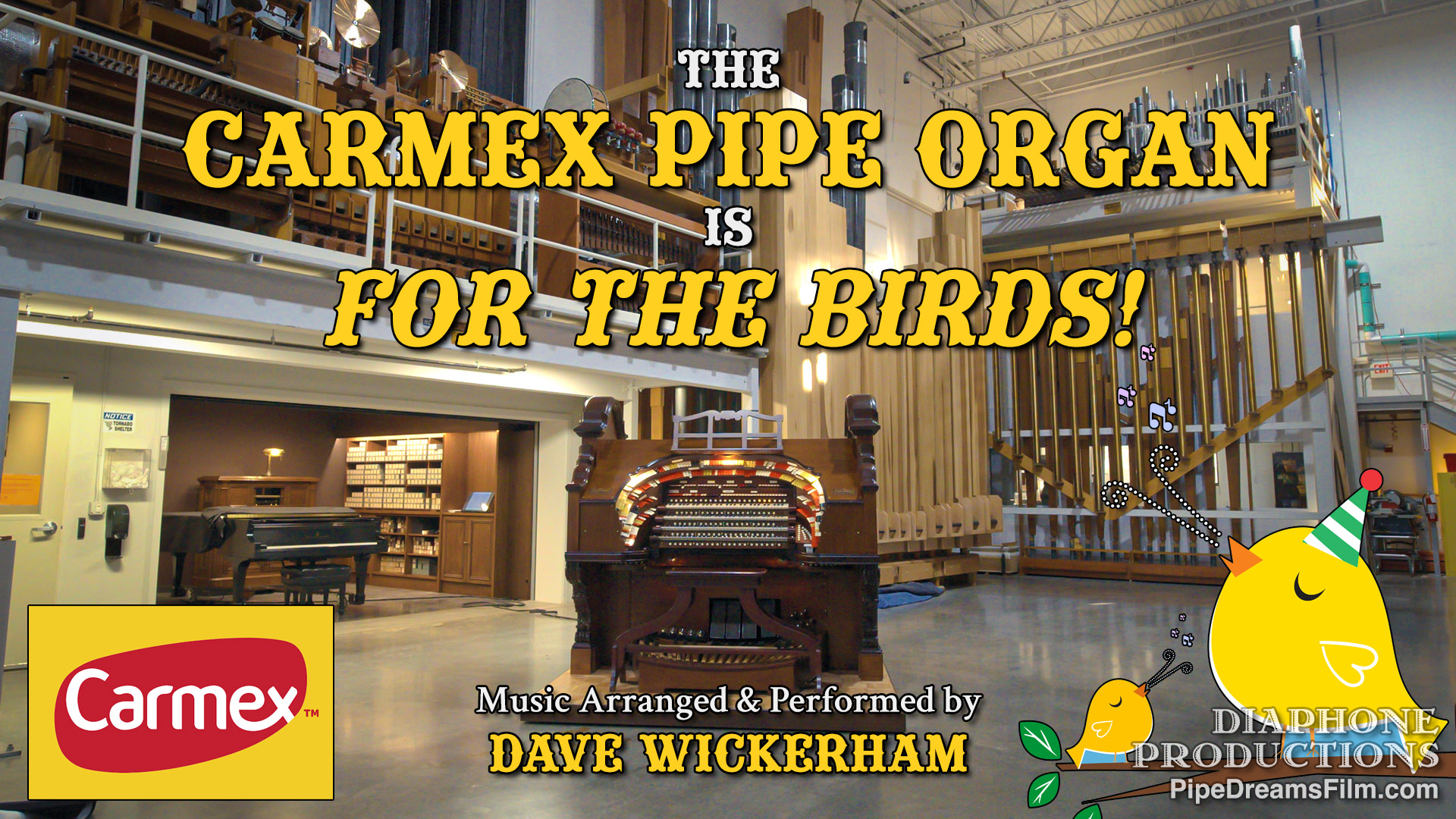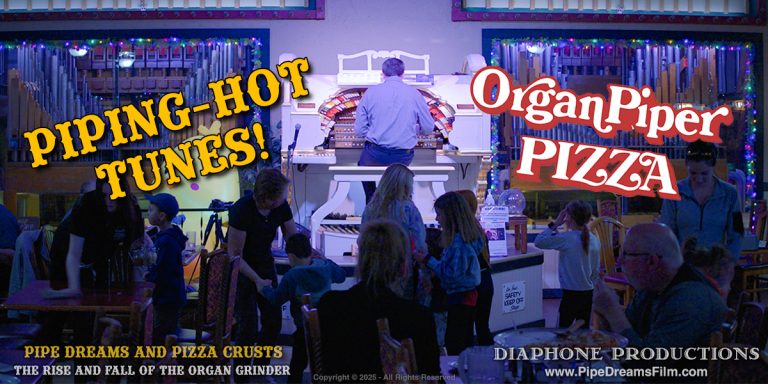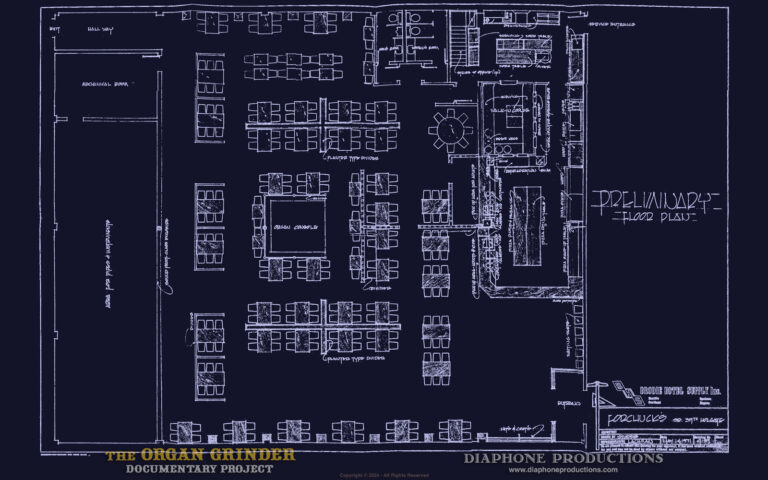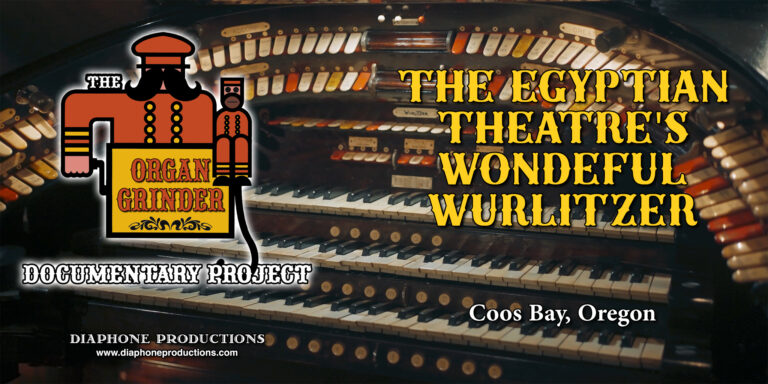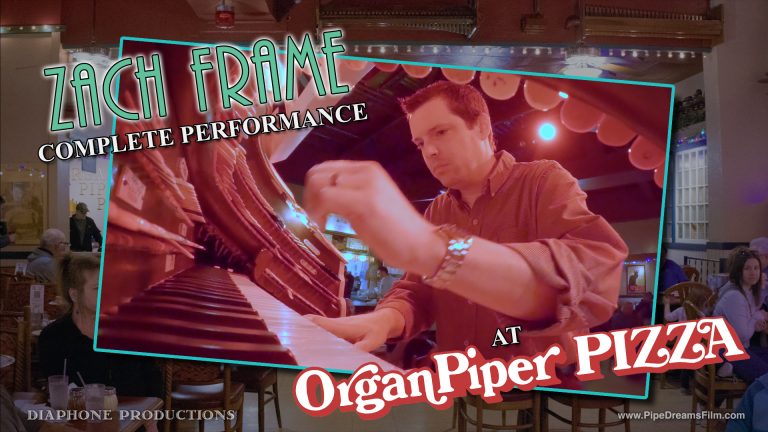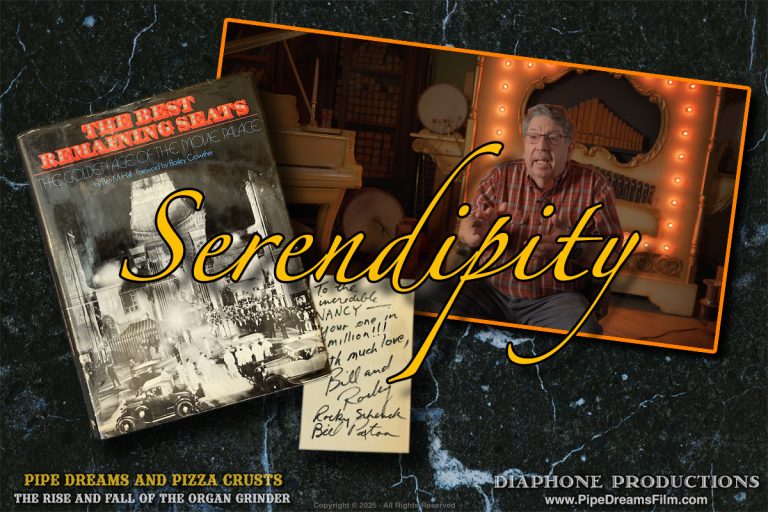Inside a warehouse in Franklin, Wisconsin, belonging to Carma Labs, Inc. (the makers of Carmex), is the world’s largest theatre pipe organ.
As part of the Organ Grinder documentary project, and our return to the Midwest in September, we visited Carma Labs to see what weird and wonderful things people are doing with theatre pipe organs today.
This video is an experiment – made possible by the fact that the organ’s relay (the brains of a pipe organ) can record every detail of an organist’s performance, and play it back later.
The playback feature allowed us to move the cameras around to record many of the moving parts, such as percussions, that you can find on a theatre pipe organ.
The organ came to be because Carma Labs is a family-owned business, and co-owner Paul Woelbing is a fan of pipe organs. When the company built this warehouse, Paul heard the reverb in the space and thought, “This would make a good space for a pipe organ!”
Until mid-2025, when a new building opened, the building was a functioning, busy warehouse.
It was not unusual to hear the sounds of the pipe organ and forklifts and trucks at the same time.
The core of the instrument is a 15-rank Wurlitzer, originally from Chicago’s Nortown Theatre.
(A “rank” is a set of pipes that make one particular sound, usually with enough pipes for a complete keyboard.)
The Carma Labs instrument has been vastly expanded from the original 15 ranks, and as of 2025 has 92 ranks – over 6,000 pipes!
The organ was installed and expanded by Century Pipe Organs, owned by Terry Kleven and Bob Swaney, with additional crew members Karl Eilers, Zach Frame, Steve Hansen, Mark Herman, and Ron Mitchell.
The organ has a rank of tuned bird whistles, and a grand piano that can be played from the organ’s console.
More than “just” a theatre organ, the instrument is inspired by the 640-rank Wanamaker Grand Court Organ in Philadelphia.
Both organs have many “symphonic” ranks which imitate orchestral instruments.
The powerful “Diaphone” pipes, some over 32-feet long, generate frequencies down to 16Hz – you can really feel the rumble in-person.
There’s also a Posthorn – the loudest solo stop on the organ – it can really blow you away!
The organ’s many percussion instruments are played directly by the organist. There is no “drum machine”. (Not yet, anyway.)
This video features a performance by organist Dave Wickerham.
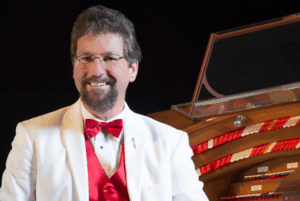
It’s Dave’s arrangement of Swedish accordionist and composer Calle Jularbo’s tune “Livet i Finnskogarna” (roughly “Life in the Finn forests”) from 1915.
The song was also used as the basis of the Les Paul and Mary Ford hit, “Mockin’ Bird Hill” in 1951.
We’re calling it “Medley of the Birds”.
The building is now being converted into an event space where music lovers can come experience the giant instrument in-person.
If you’re in the Milwaukee area, the organ will be demonstrated, both in “Jukebox Mode” and with live performances on Saturday, September 27th, 2025, as part of the “Doors Open Milwaukee” event. (Address and description at link.)
Thanks to Paul Woelbing for letting us film all day to capture many angles.
Thanks to Dave Wickerham for letting us feature his performance and arrangement.
And special thanks to forklift operator Carlos Albiter. (It’s not often that you get to credit a forklift operator in a pipe organ video.)
You can help support the project by purchasing from the Crowdfunding Shop.

